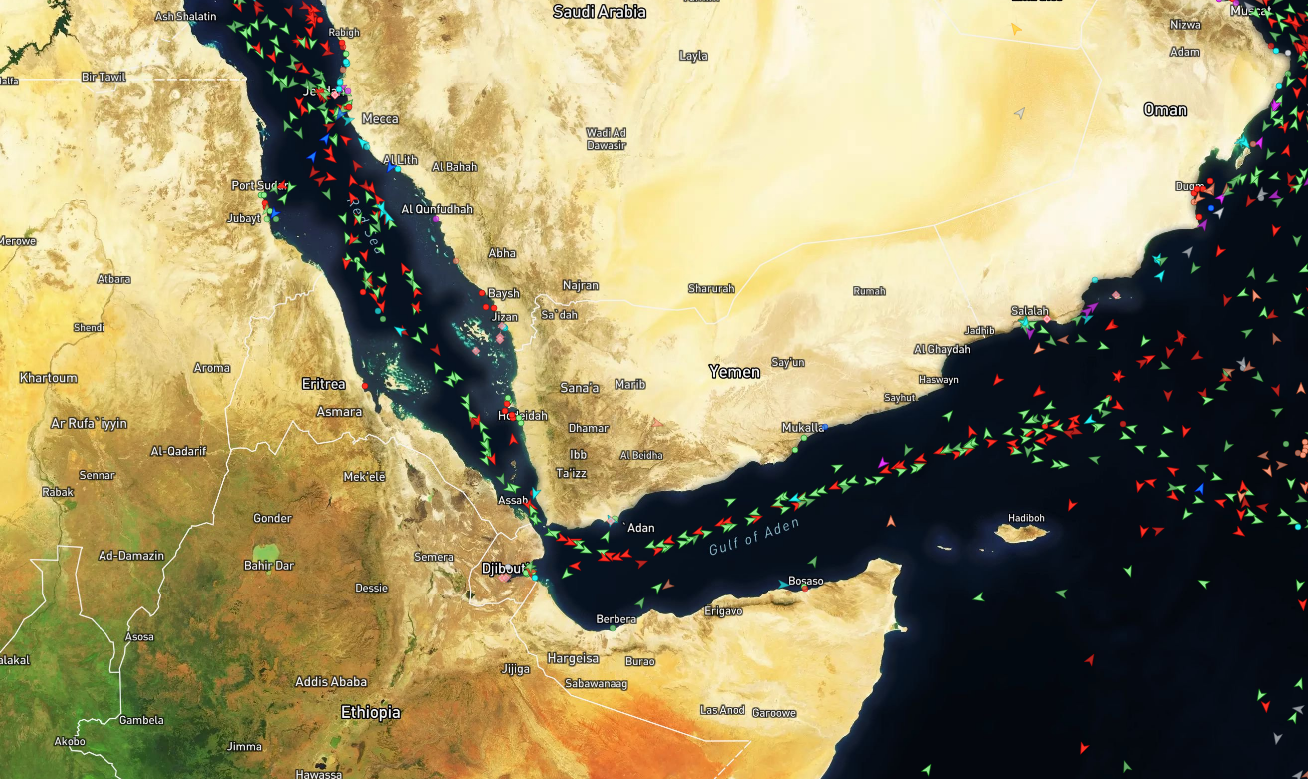
Image: MarineTraffic
In the face of escalating dangers, vessels persist in utilizing the Red Sea route, navigating through the Bab el-Mandeb strait despite explicit warnings from various authorities.
Recent assaults on shipping in the Red Sea by Yemen’s Houthi rebels have significantly impacted the region’s maritime traffic. Despite stern cautions from government coalitions, industry bodies, and maritime security consultancies advising vessels to steer clear of the area, the waterway remains far from deserted.
Yemen’s Houthi rebels have been relentless in their attacks, utilizing drones and missiles, with 29 recorded strikes since November. The latest strike occurred on Monday when a Houthi ballistic missile hit an American-owned bulker in the Gulf of Aden. Responding to the threat, U.S. and British forces have targeted Houthi positions on land, but the militant group retains the capacity for further strikes.
The U.S. Maritime Administration and the Combined Maritime Forces have issued warnings, urging vessels to avoid the waters south of the Saudi border or west of Aden. Despite this, merchant traffic persists along the Red Sea-Suez route, albeit at a reduced pace. Bulkers, freighters, and tankers continue their journeys, often neglecting to disable AIS.
Surprisingly, some vessels have adopted a novel approach to navigate the troubled waters. Houthi leader Mohammed Ali Al-Houthi suggested ships passing by Yemen should denounce Israel in their AIS broadcast signal. Several ships, including the bulkers SSI Glorious, Voras, AC Renhe, and Pocahontas, were seen broadcasting “no contact with Israel” as their AIS destination.
Assessing the situation, Corey Ranslem, CEO of maritime intelligence firm Dryad Global, revealed that vessel traffic on the Red Sea route now stands at 50-60% of its previous volume. Despite the apparent risks, no steel-hulled merchant ship has sunk due to a Houthi attack in the ten years since the Yemeni civil war began.
Shipowners and insurers weigh the risk and reward of using the route, considering the potential hazards to vessels. While Houthi attacks have caused damage, catastrophic structural failure leading to the sinking of a ship remains unobserved. Fortunately, no seafarers have lost their lives in the current Red Sea unrest, though past incidents remind of the potential dangers associated with such conflicts.
Source: MarineExecutive

